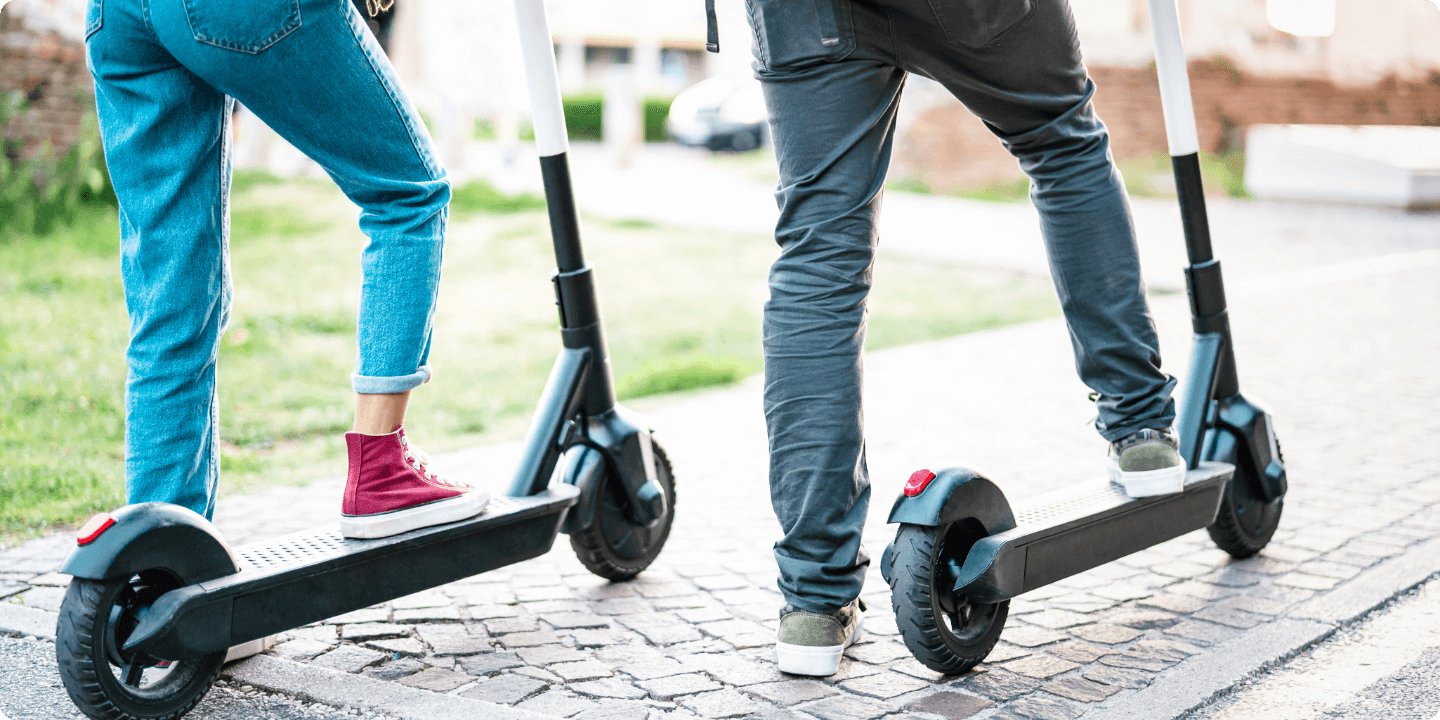What is shared mobility?
Shared mobility is a transformative and efficient way of transportation that emphasizes connectivity, sharing, and convenience. It represents an innovative approach to affordable, convenient, and rapid travel. It encompasses various modes of transportation, including public transit, micro-mobility, and car sharing.
1. Public transit
Public transit is a service offered by the government or government-appointed organizations to cater to the general public’s travel needs. It is characterized by its inclusivity, as anyone can avail themselves of transportation services by paying a fixed fare, which is generally affordable. Public transit plays a vital role in ensuring everyday commuting within cities and holds significant importance for urban transportation systems.
2. Micro-mobility
Micro-mobility is a mode of transportation that prioritizes short-distance travel, with its main application being “last-mile” connectivity. It includes shared bicycles, scooters, and electric bicycles, among others. Micro-mobility plays a significant role in alleviating traffic congestion and meeting individuals’ diverse personal mobility needs.
3. Car sharing& Car pooling
Car sharing is a transportation mode suitable for both short and long-distance travel. However, in terms of shared mobility, it facilitates long-distance journeys. On the other hand, carpooling services have emerged as a popular trend in recent years, with commuting to and from work being the most common scenario for carpooling.
Both car sharing and carpooling services meet individual travel needs and help save expenses, making them highly favored modes of transportation.
Benefits of shared mobility
Shared mobility offers a multitude of benefits that can be categorized into five areas - Economic Benefits, Environmental Benefits, Health Benefits, Improved Accessibility, and Employee Overall Satisfaction. Taking these benefits into consideration provides a unique and valuable perspective on the importance of shared mobility.
1. Economic Benefits
The economic impact of shared mobility can be divided into direct and indirect aspects.
Direct aspects:
Directly promote local economic development. According to data, the total value of the global shared mobility market will reach 500 billion US dollars in 2022, and this total value will grow rapidly at an annual rate of 8%.
Create employment opportunities. The entire shared mobility industry chain includes production, scheduling, after-sales and maintenance, and can provide a large number of jobs. According to a research report released by the Economic Policy Institute (EPI) and the University of California Berkeley, Uber and Lyft directly created 650,000 jobs in the United States, and tens of millions of jobs in the global shared mobility field.
Reduce travel costs. Shared mobility can provide convenience for most people who cannot buy a car, reduce their travel costs, and provide urban residents with a more convenient and economical way of travel.
Indirect aspects:
Promote the common development of related industries. The rapid development of the shared mobility industry has driven the development of industries such as fuel, insurance and finance.
Promote sustainable urban development. Shared mobility can reduce traffic congestion and air pollution, thereby improving urban travel efficiency and environmental quality, thereby achieving green and sustainable development goals.
Promote the development of new technologies. Shared mobility relies on advanced technology to build an interconnected and shared mobile platform, which not only facilitates people’s travel, but also indirectly promotes the development of industries such as cloud computing, the Internet of Things, and artificial intelligence.
2. Environmental Benefits
Act now! Enjoy a shared mobility! Shared mobility works well for the environment. According to data from the U.S. Department of Transportation and the European Environment Agency: through shared mobility, the annual reduction of carbon dioxide emissions exceeds 20,000 tons, which is about the absorption of one million trees a year. What an astonishing figure.
3. Health Benefits
Enjoy a shared bicycle travel experience, let's act together!
Can shared mobility really take on the role of a healthy lifestyle? The answer is yes. A healthy lifestyle is very important. Everyone will have different choices. If you can solve the last mile problem and exercise well at the same time, why not do it? Do try it, shared mobility is one of the best options.
To experience shared bicycles in stages, once or twice a week or even more, can reduce work pressure, improve body metabolism, and be in a relaxed environment, which is more conducive to a healthy lifestyle.
4. Improved accessibility
Shared mobility has proven to be a versatile solution for providing mobility to those who do not have access to a personal car. Its benefits extend to various demographics, including individuals residing in remote areas, low-income groups, students, and the elderly. Furthermore, large-scale corporations can also leverage shared mobility services to provide their employees with a seamless and comfortable travel experience. Sentinel, for instance, offers customized internal travel solutions to companies like
BASF and
SHELL, effectively addressing travel-related challenges faced by their workforce. This improves employee satisfaction and enhances their sense of belonging and connection with their workplace.
Blue-bike: A Customized Public Bike Sharing Case
Sentinel provides services for many large enterprises and government public projects. Blue-bike is also one of the projects. The combination of Sentinel smart lock and network platform offers citizens flexible and convenient bicycle travel services.
Blue-bike is the application scenario of the Sentinel M60 smart lock. It is tailor-made for Belgian public travel through a white-label bicycle-sharing platform. The customized user APP has a simple interface and is easy to use. It can realize a variety of shared travel functions through mobile phones, including booking, tracking, and parking, and is deeply loved by the general public.
Relying on solid technical integration and user-friendly design, the Blue-bike project provides Belgian residents and tourists with a healthy, sustainable, and convenient travel option, providing Sentinel with practical experience in shared mobility.
Conclusion
Every era brings innovations that benefit humanity, and shared mobility is undoubtedly one such innovation. From bicycles and electric bicycles to cars, there are potentially even more, novel forms of shared transportation on the horizon. These advancements address numerous challenges in travel, such as last-mile commuting and transportation within large organizations.
At Sentinel, we are committed to playing an increasingly significant role in the shared mobility sector. Our focus encompasses a range of areas, including shared mobility solutions, bicycle safety, white-label bike rental software, and more. We are dedicated to advancing the field of shared mobility and contributing to its ongoing development.








